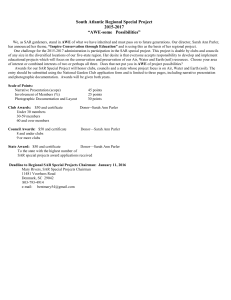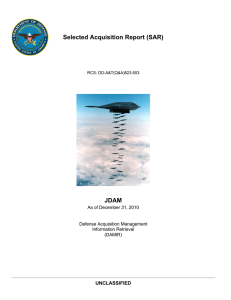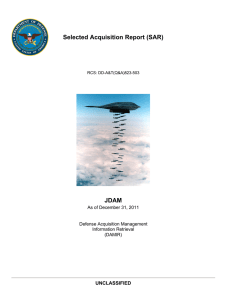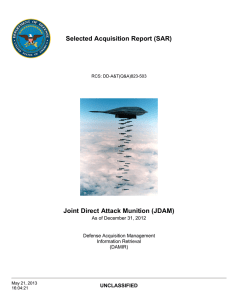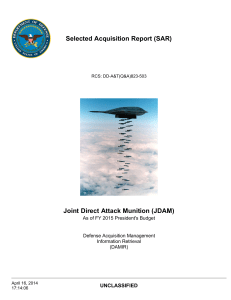MQ-9A Reaper Hunter Killer Armed Unmanned Aircraft System (UAS)
advertisement
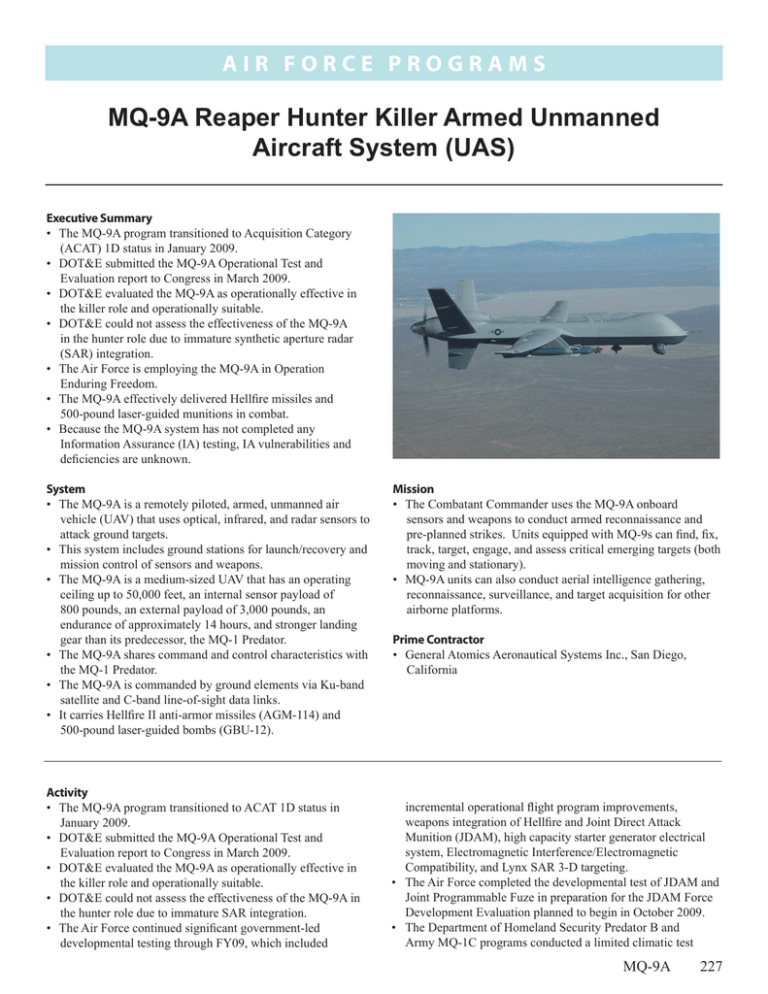
AIR FOR C E P ROGRA M S MQ-9A Reaper Hunter Killer Armed Unmanned Aircraft System (UAS) Executive Summary • The MQ-9A program transitioned to Acquisition Category (ACAT) 1D status in January 2009. • DOT&E submitted the MQ-9A Operational Test and Evaluation report to Congress in March 2009. • DOT&E evaluated the MQ-9A as operationally effective in the killer role and operationally suitable. • DOT&E could not assess the effectiveness of the MQ-9A in the hunter role due to immature synthetic aperture radar (SAR) integration. • The Air Force is employing the MQ-9A in Operation Enduring Freedom. • The MQ-9A effectively delivered Hellfire missiles and 500-pound laser-guided munitions in combat. • Because the MQ-9A system has not completed any Information Assurance (IA) testing, IA vulnerabilities and deficiencies are unknown. System • The MQ-9A is a remotely piloted, armed, unmanned air vehicle (UAV) that uses optical, infrared, and radar sensors to attack ground targets. • This system includes ground stations for launch/recovery and mission control of sensors and weapons. • The MQ-9A is a medium-sized UAV that has an operating ceiling up to 50,000 feet, an internal sensor payload of 800 pounds, an external payload of 3,000 pounds, an endurance of approximately 14 hours, and stronger landing gear than its predecessor, the MQ-1 Predator. • The MQ-9A shares command and control characteristics with the MQ-1 Predator. • The MQ-9A is commanded by ground elements via Ku-band satellite and C-band line-of-sight data links. • It carries Hellfire II anti-armor missiles (AGM-114) and 500-pound laser-guided bombs (GBU-12). Activity • The MQ-9A program transitioned to ACAT 1D status in January 2009. • DOT&E submitted the MQ-9A Operational Test and Evaluation report to Congress in March 2009. • DOT&E evaluated the MQ-9A as operationally effective in the killer role and operationally suitable. • DOT&E could not assess the effectiveness of the MQ-9A in the hunter role due to immature SAR integration. • The Air Force continued significant government-led developmental testing through FY09, which included Mission • The Combatant Commander uses the MQ-9A onboard sensors and weapons to conduct armed reconnaissance and pre-planned strikes. Units equipped with MQ-9s can find, fix, track, target, engage, and assess critical emerging targets (both moving and stationary). • MQ-9A units can also conduct aerial intelligence gathering, reconnaissance, surveillance, and target acquisition for other airborne platforms. Prime Contractor • General Atomics Aeronautical Systems Inc., San Diego, California incremental operational flight program improvements, weapons integration of Hellfire and Joint Direct Attack Munition (JDAM), high capacity starter generator electrical system, Electromagnetic Interference/Electromagnetic Compatibility, and Lynx SAR 3-D targeting. • The Air Force completed the developmental test of JDAM and Joint Programmable Fuze in preparation for the JDAM Force Development Evaluation planned to begin in October 2009. • The Department of Homeland Security Predator B and Army MQ-1C programs conducted a limited climatic test MQ-9A 227 AIR FOR C E P ROGRA M S in March 2009 at the McKinley Climatic Laboratory at Eglin AFB, Florida. The Final Test Report for the Limited Qualification System-Level Climatic Test of the Extended Range Multi-Purpose Unmanned Aircraft System was published in November 2009. The Program Office is reviewing these test results to determine if similarities between the two platforms will allow the Air Force to use these test data and determine potential MQ-9A system cold weather operations issues Assessment • The MQ-9A continues to lack an all-weather Hunter-Killer capability due to its SAR control system integration. The SAR is the only onboard sensor with the ability to locate and track targets through clouds and provide the all weather Hunter‑Killer capability. However, functional control of the SAR is not yet integrated into the senor operator station requiring a third operator in the Ground Control Station (GCS) controlling the radar. In addition, the SAR cannot yet generate target coordinates with sufficient accuracy for JDAM targeting, which is the only precision guided weapon that can be deployed in all weather conditions. • The MQ-9A demonstrated expanded combat capability with the developmental testing of JDAM integration. • Because the MQ-9A system has not completed any IA testing, IA vulnerabilities and deficiencies are unknown. • Based on the observed system integration deficiencies and technical immaturity of the SAR during IOT&E, the MQ-9A system will require FOT&E to fully assess the hunter role and Net-Ready Key Performance Parameters (KPP) and characterize its effectiveness. Recommendations • Status of Previous Recommendations. The Air Force did not address the two FY08 recommendations: 228 MQ-9A - Develop an updated TEMP reflecting the current Acquisition Strategy with detail for the FOT&E activities required to fully asses the effectiveness and suitability of IOT&E deficiencies, incremental improvements, and intelligence, surveillance, and reconnaissance capabilities - Implement a robust reliability improvement program in order to address identified reliability shortfalls. • FY09 Recommendation. 1. The Air Force should complete the recommendations in the MQ-9A Operational Test and Evaluation report submitted to Congress in March 2009, including: ▪ Conduct a formal FOT&E on the 14 deferred Increment 1 capabilities, SAR radar integration, and weapon’s upgrades. ▪ Ensure the integration of the SAR into the GCS allowing effective aircrew use in its intended concept of operations. ▪ Implement pilot interfaces to minimize the risk of mishaps in the landing environment. ▪ Verify the correction of deficiencies identified as Category 1 discrepancy reports. ▪ Reevaluate and consider a more realistic Mean Time Between Critical Failure metric commensurate with similar weapons systems. ▪ Conduct operational testing in other than desert-like climates to include maritime, cold weather, and chemical/ biological agent conditions. ▪ Complete successful Joint Interoperability Test Command certification satisfying the Net Ready KPP.



